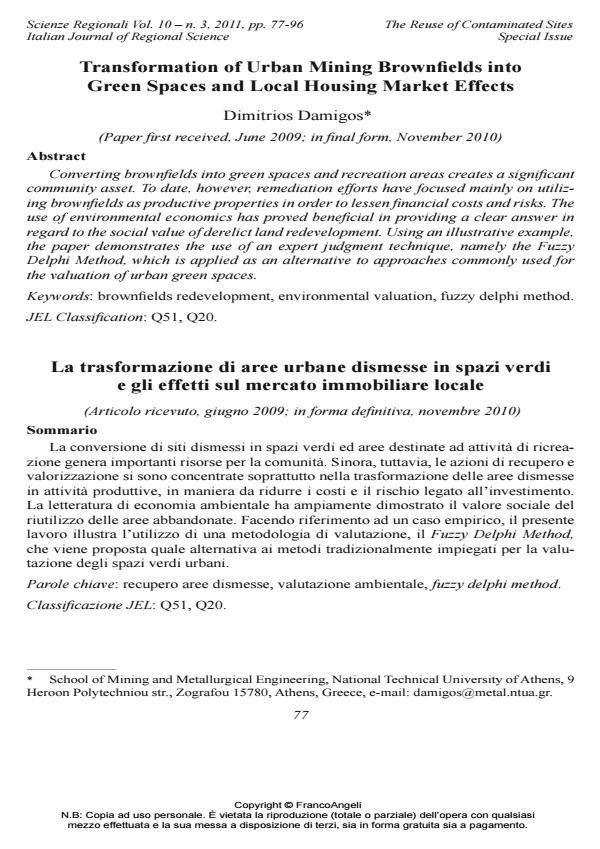Transformation of Urban Mining Brownfields into Green Spaces and Local Housing Market Effects
Journal title SCIENZE REGIONALI
Author/s Dimitrios Damigos
Publishing Year 2011 Issue 2011/3
Language English Pages 20 P. 77-96 File size 237 KB
DOI 10.3280/SCRE2011-003005
DOI is like a bar code for intellectual property: to have more infomation
click here
Below, you can see the article first page
If you want to buy this article in PDF format, you can do it, following the instructions to buy download credits

FrancoAngeli is member of Publishers International Linking Association, Inc (PILA), a not-for-profit association which run the CrossRef service enabling links to and from online scholarly content.
Converting brownfields into green spaces and recreation areas creates a significant community asset. To date, however, remediation efforts have focused mainly on utilizing brownfields as productive properties in order to lessen financial costs and risks. The use of environmental economics has proved beneficial in providing a clear answer in regard to the social value of derelict land redevelopment. Using an illustrative example, the paper demonstrates the use of an expert judgment technique, namely the Fuzzy Delphi Method, which is applied as an alternative to approaches commonly used for the valuation of urban green spaces.
Keywords: Brownfields redevelopment, environmental valuation, fuzzy delphi method
Jel codes: Q51, Q20
- Setting rehabilitation priorities for abandoned mines of similar characteristics according to their visual impact: The case of Milos Island, Greece Evangelos Mavrommatis, Maria Menegaki, in Journal of Sustainable Mining /2017 pp.104
DOI: 10.1016/j.jsm.2017.10.003 - Choosing the Most Proper Plant Types in Reclamation of an Open-Pit Mine I. Alavi, A. Ebrahimabadi, H. Hamidian, in Journal of Mining Science /2022 pp.151
DOI: 10.1134/S1062739122010185
Dimitrios Damigos, Transformation of Urban Mining Brownfields into Green Spaces and Local Housing Market Effects in "SCIENZE REGIONALI " 3/2011, pp 77-96, DOI: 10.3280/SCRE2011-003005